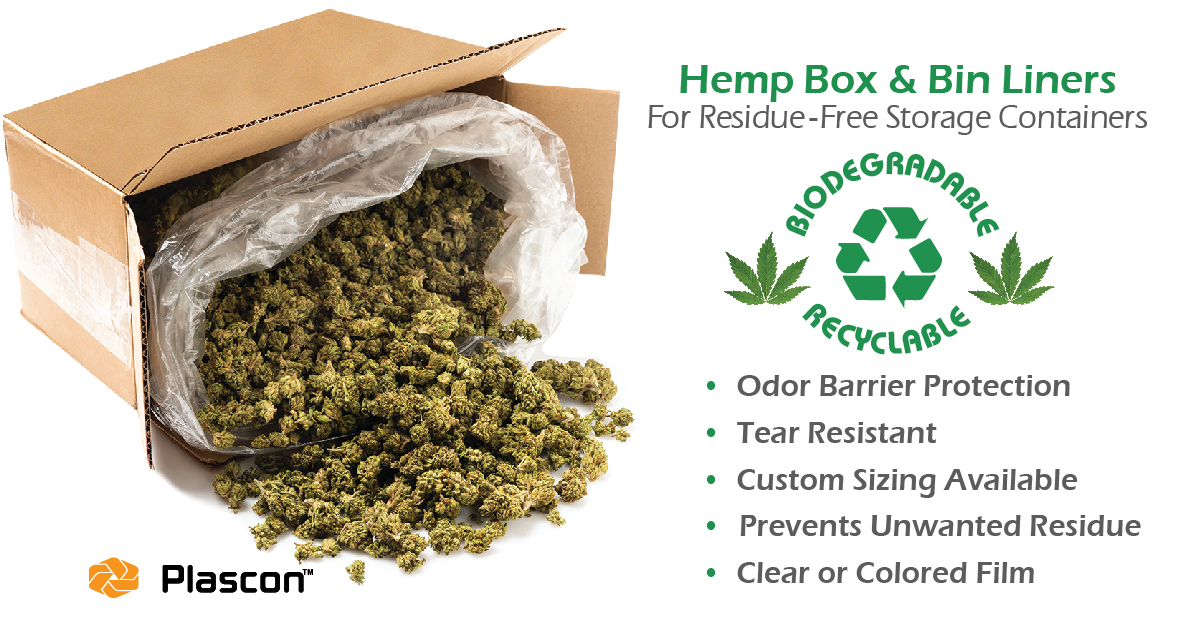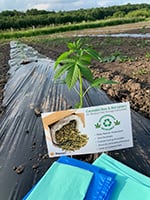
What's the Hype in Hemp?
The History of Hemp Farming
Hemp has been around for hundreds of years. In the past, Hemp was used for the basic necessities: food, shelter, netting, and clothing. Here in North America, hemp played a fundamental role in our history.
American farmers were required by law to grow hemp in the original thirteen colonies. All ships crossing the ocean were rigged with hemp sails. Pioneer wagons had hemp covers on their wagons. Even a draft of the U.S. Declaration of Independence was written on hemp paper! Ironically, in 1937 hemp was strictly regulated by the Marijuana Tax Act, largely due to confusion with other kinds of cannabis. Hemp could only be grown through specially issued government tax stamps, making any type of possession/transfer without a tax stamp illegal. In 1942, the U.S. Department of Agriculture launched a Hemp For Victory campaign to get patriotic farmers to grow hemp in support of war efforts.
Fast Forward to Today’s Current Hemp Farming
 Industrial hemp farming is currently growing in many states, and is widely grown in Kentucky, Tennessee, and Colorado. Hemp is an annual crop, seeded in regions where you would find many other crops, because it’s an oil-seed crop that grows best in climates with cool spring seeding temperatures and long, dry, and warm summer days. Hemp is planted in late spring (May/June) and harvested in August and September. Once hemp starts growing it can out-compete weeds so no herbicides are needed. The seeds are planted by using seeders – equipment that uniformly and mechanically sows the seed. Seed is planted shallow, with good seed-to-soil contact to ensure seedlings are protected from the environment. Uniform placement helps with rapid establishment of a healthy vigorous plant stand that can out-compete weeds.
Industrial hemp farming is currently growing in many states, and is widely grown in Kentucky, Tennessee, and Colorado. Hemp is an annual crop, seeded in regions where you would find many other crops, because it’s an oil-seed crop that grows best in climates with cool spring seeding temperatures and long, dry, and warm summer days. Hemp is planted in late spring (May/June) and harvested in August and September. Once hemp starts growing it can out-compete weeds so no herbicides are needed. The seeds are planted by using seeders – equipment that uniformly and mechanically sows the seed. Seed is planted shallow, with good seed-to-soil contact to ensure seedlings are protected from the environment. Uniform placement helps with rapid establishment of a healthy vigorous plant stand that can out-compete weeds.
With good growing conditions, emergence will occur within four to seven days. Seedlings can generally withstand mild spring frost during this initial growth period. The only thing seedlings really don’t like at this stage is excess water.
By July, hemp crops will already be a few feet tall and starting to look a bit like mini lush trees. Hemp has a broad leaf that naturally suppresses light, further helping to out-compete weeds. Throughout July and August the hemp plants will grow quite quickly. Depending on variety, hemp that is grown for food purposes can grow four to five feet during this period. You will also start seeing seeds developing at the top of the plant, hidden under the leafy part.
Hemp reaches maturity after around 100 to 120 days. Farmers will know it’s time to harvest by the color of the plants, maturation of seeds, and grain moisture (something farmers monitor frequently close to harvest). Harvest is often the trickiest part of growing hemp. Hemp is a dual-use crop. The stalk of the hemp plants can be used for textiles and hemp fiber products. At the very top of the plant, you’ll find whole hemp seeds that are primarily used to make a wide range of hemp food products, and of course the CBD oil.
Eco-Friendy Biodegradable Packaging Options
The Plascon Group has been helping hemp farmers across the United States with eco-friendly packaging options with recyclable biodegradable plastics for bin liners used during their cultivation and packaging. Let us know if we can send you some samples to test, and allow Plascon to help you during your harvest and cultivation.



